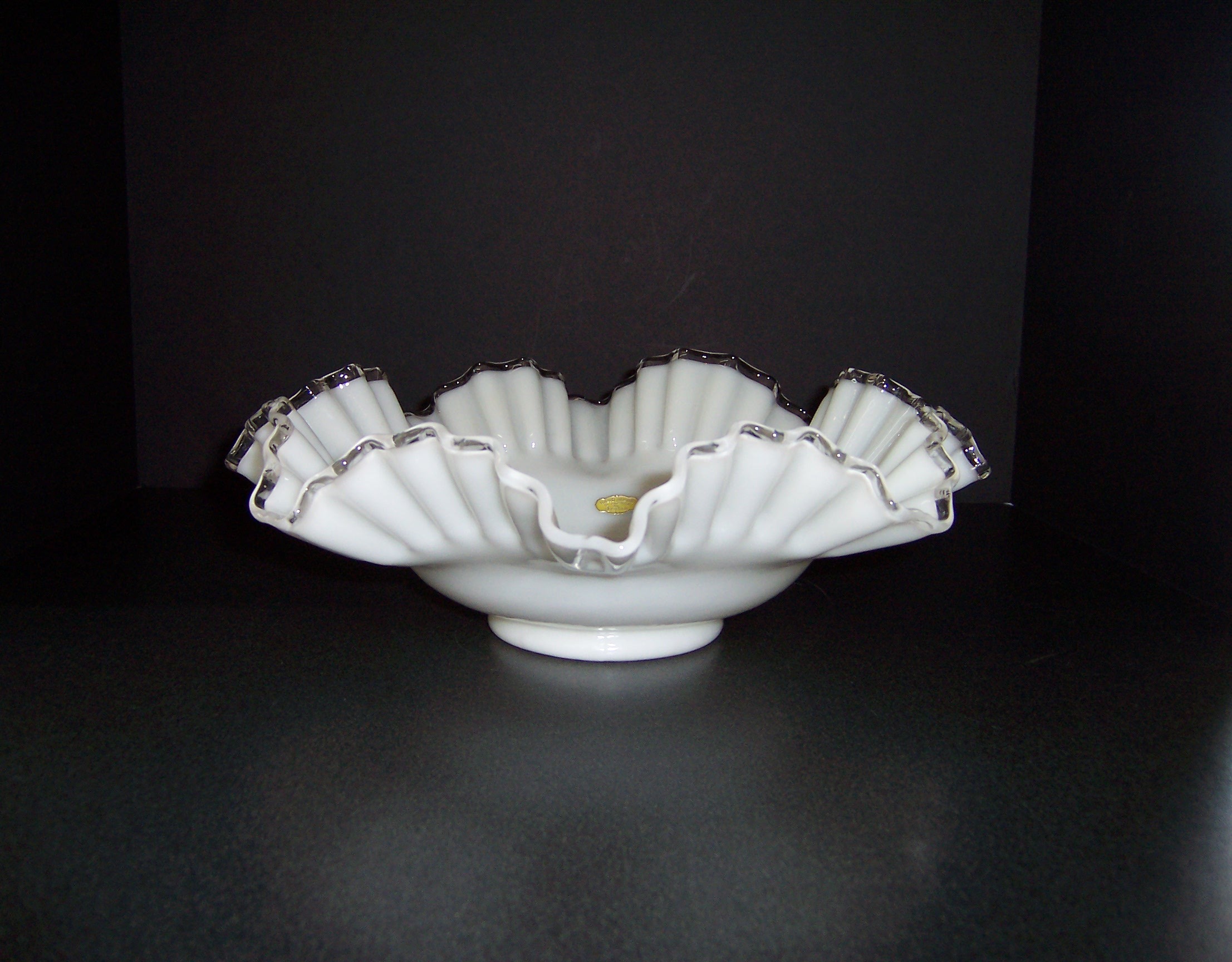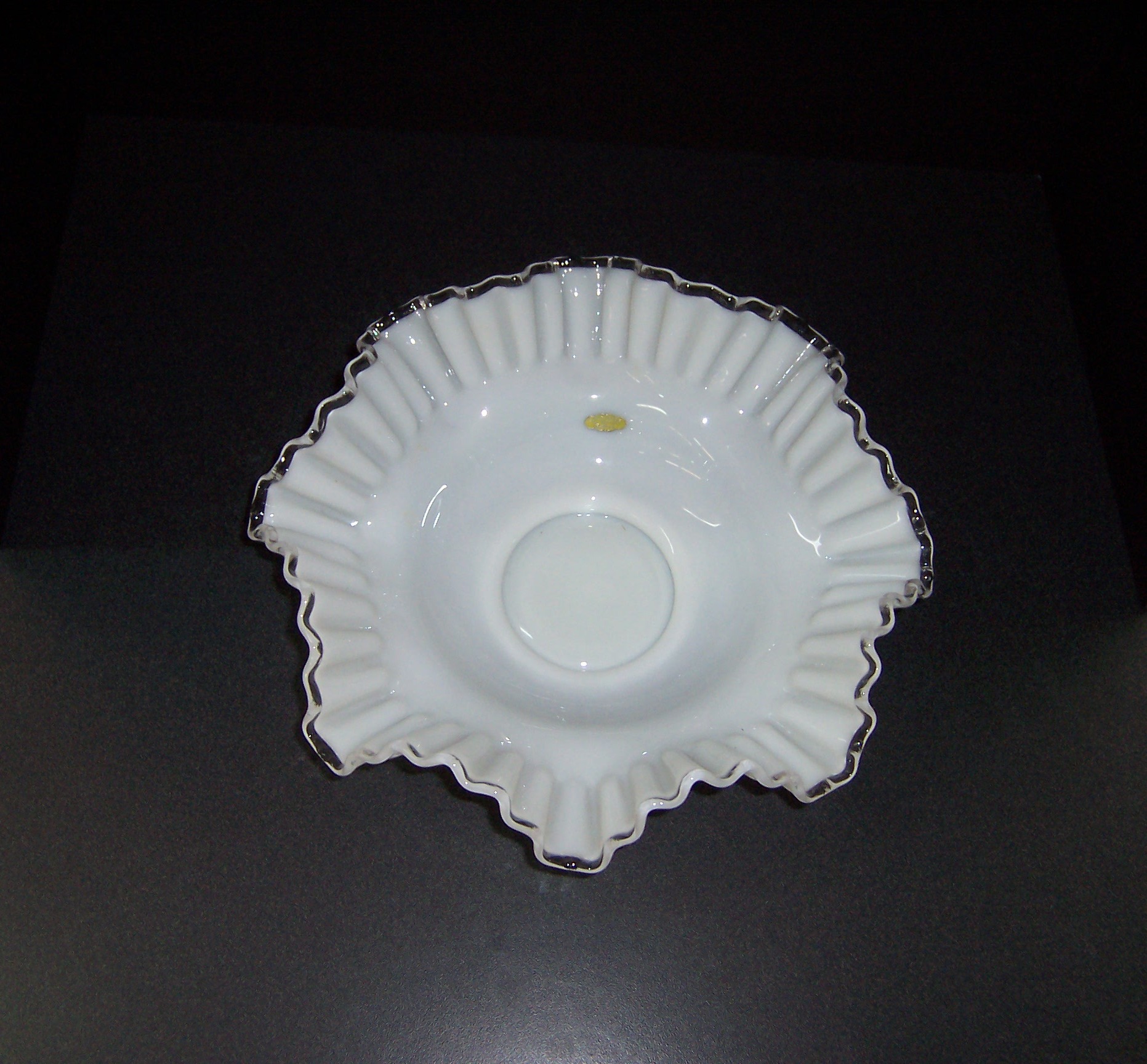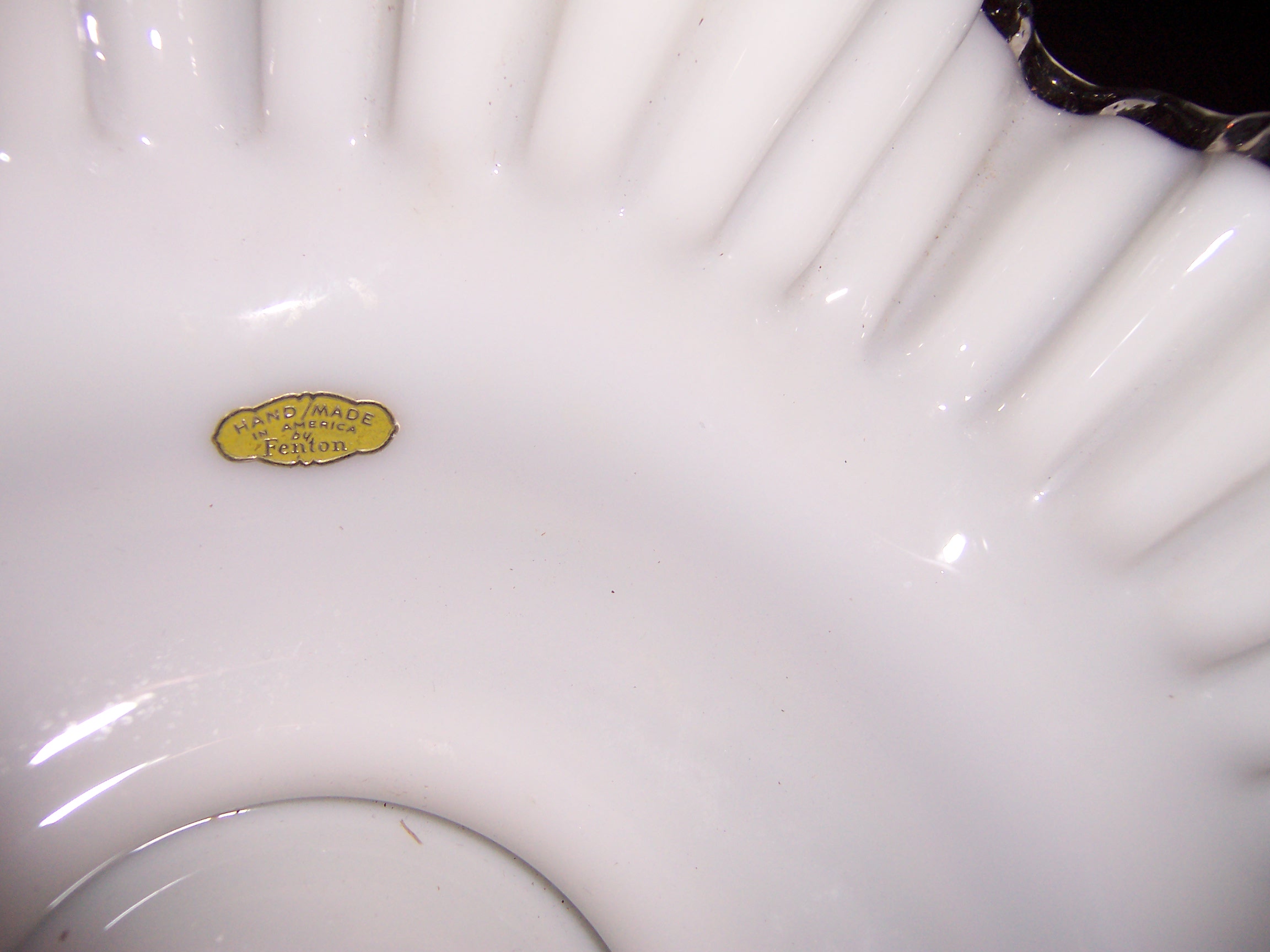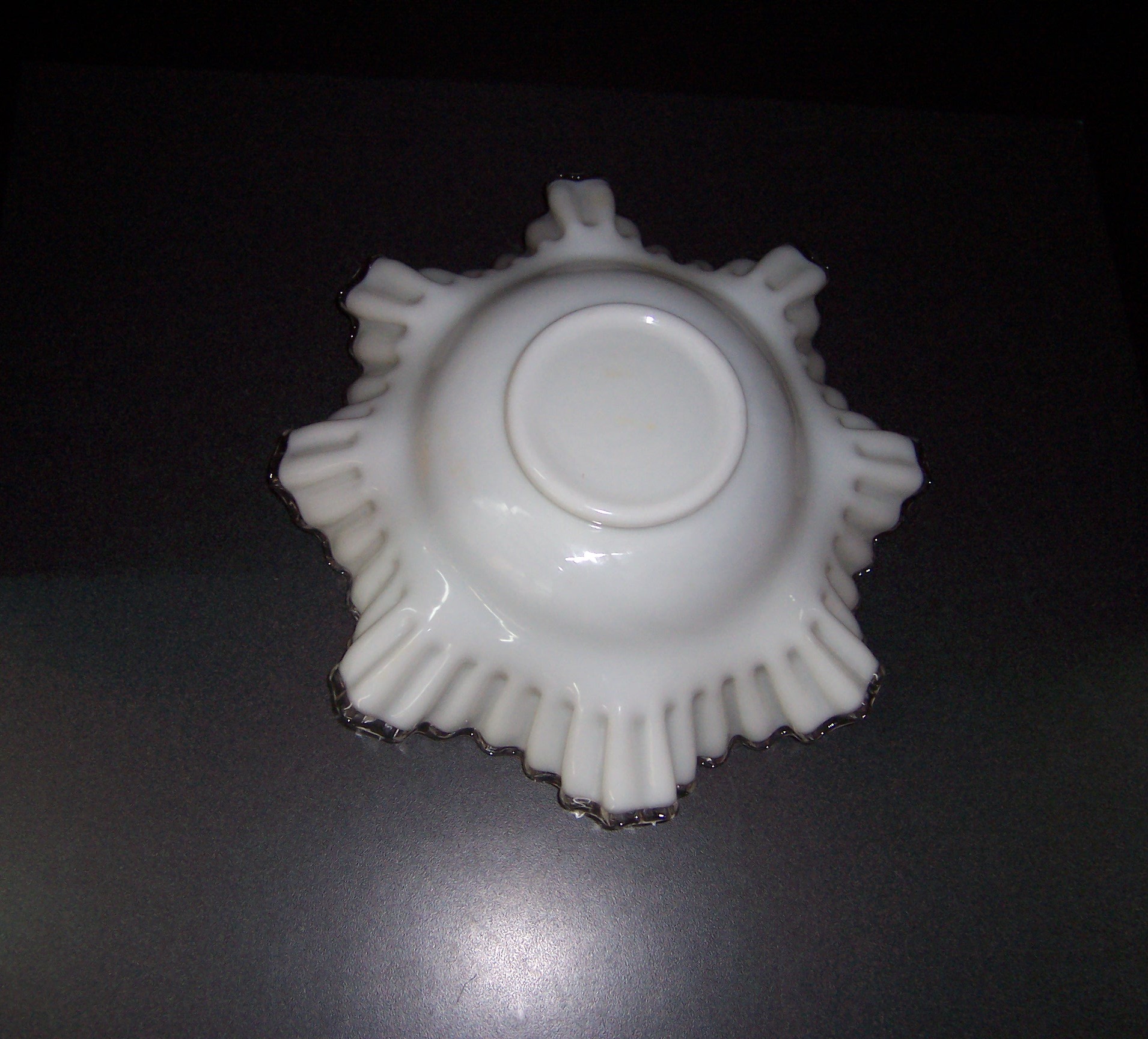Description
Fenton Silver Crest Milk Glass Bowl Ruffled in great condition. It measures 3 5/8″ high x 11″ diameter.
The Fenton Art Glass Company was founded in 1905 by brothers Frank L. Fenton and John W. Fenton.
Contents [hide]
1 History
2 Maker marks
3 Item Codes
4 Patterns
5 Colors and combinations
6 Decorations
7 Closure
8 See also
9 References
10 External links
History[edit]
The original factory was in an old glass factory in Martins Ferry, Ohio in 1905.[1] The factory at one time was owned by the old West Virginia Glass Company.[2] At first they painted glass blanks from other glass makers, but started making their own glass when they became unable to buy the materials they needed.[2] They moved across the Ohio river to Williamstown, West Virginia, and built a factory in 1906. The first year for glass production was 1907.[1] In 1908 John Fenton left the company and founded the Millersburg glass company in Millersburg, OH.[1]
Frank Fenton was the designer and decorator. From 1905 to 1920, the designs made there were heavily influenced by two other glass companies: Tiffany and Steuben. But the many different colors were the work of Jacob Rosenthal, a famous glass chemist who is known for developing chocolate and golden agate glass.[3] Towards the end of 1907, the Fenton brothers were the first to introduce carnival glass, which later became a popular collector’s item.[4]
During the Great Depression and World War II, Fenton produced practical items (such as mixing bowls and tableware) due to shortages. At the same time, they continued creating new colors. Towards the end of the Great Depression they also produced perfume bottles for the Wrisley Company in 1938. The bottles were made in French opalescent glass with the hobnail pattern.[5]
In 1939, Fenton started selling Hobnail items in milk glass. Hobnail milk glass would become the top-selling line and allowed the Fenton company to expand.
In the late 1940s, the top three members of Fenton’s management died. Frank Fenton and Wilmer C. “Bill” Fenton immediately stepped in and took over the positions of President and Vice President, respectively. Over the next thirty years, they continued to expand Fenton Art Glass, despite a large number of glass factories closing down.
In 1986, George W. Fenton, Frank’s son, took over as President of the company.[6]
Maker marks[edit]
In 1970, the company added their logo to the bottom of some pieces to distinguish them from older pieces. In 1974, Fenton started putting their logo on all the pieces they made. Pieces made in the 1980s have the number eight under the letter “n” in the logo, pieces from the 1990s have the number nine and pieces made in the 2000s have a 0 in the same place.[7] From June 1996 to July 1998 Fenton marked preferred seconds sold in their gift shop with a sandblasted solid or hollow star.[8] In August 1998 an F replaced the star.[8]
Another type of mark is found on glass baskets. Where the glass handles of the baskets are attached to the base of the basket a stamp is made.[9] Each handler had a specific pattern to help identify which handler attached the handle.[9] The marks began in the 1950s and were instituted by Frank M. and Bill Fenton.[9]




